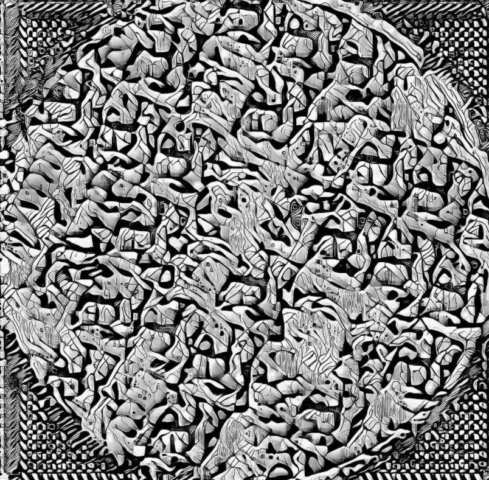
I was particularly drawn to this Helena Sarin “#latentdoodle” because although it is a non-representational piece, this AI-generated work has a composition and texture that reminds me of the appearance of sand or salt under a microscope.
Electronic Media Studio: Introduction to Interactivity and Computation
60-210 • Spring 2021 • Prof. Golan Levin

I was particularly drawn to this Helena Sarin “#latentdoodle” because although it is a non-representational piece, this AI-generated work has a composition and texture that reminds me of the appearance of sand or salt under a microscope.
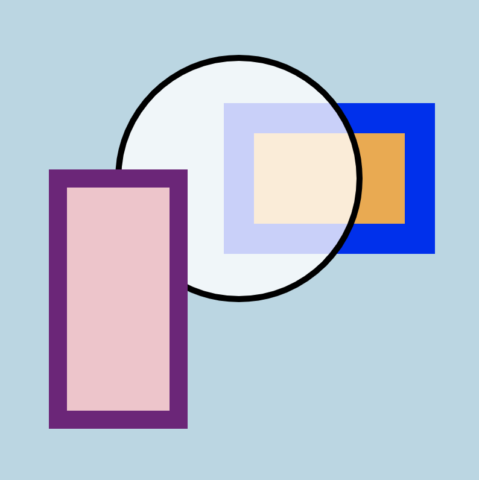
(something weird was going on with the colors so it’s not quite as saturated as the original)
LLMM002
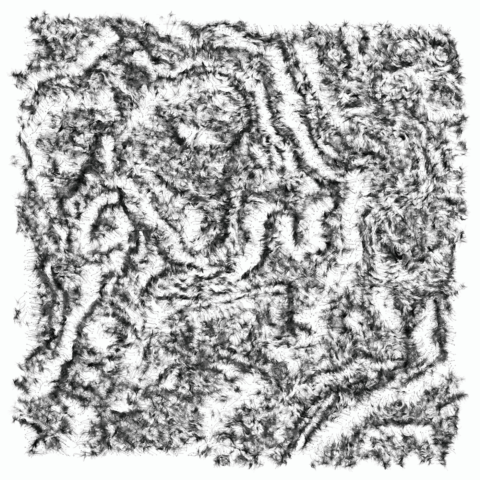
This project was interesting to me because of the apparent dimensionality of the lines being drawn. The forks in the hairlike form, and the subsequent clumping of lines makes the flow and orientation of the lines drawn very believable.
https://www.behance.net/gallery/75967473/llmm002
So, regarding the 10,000 Bowls of Oatmeal Problem.
As I understand it, the problem that Kate Compton outlines here is one I actually find a lot when listening to contemporary jazz music. There are some wonderfully brilliant technical players, all of whom can move their fingers in ways that blow my fucking mind. That said, so many of them focus on chipping away at each note and creating incredible variations with dozens of notes, rhythms and patterns that soon it becomes incomprehensible to the listener. Impressive and groundbreaking, but unclear. So in the Oatmeal Issue, we have something similar: hundreds of groundbreaking permutations on a generative system that are all certifiably unique, but at a certain point become functionally the same and unclear. The jazz example lies more on the philosophy of the musician, but it’s what came to mind first for me. Another thing I think of is the new breed of open world adventure games that are pushing the boundaries of how many in-game miles they can make their worlds, without filling it with everything. Technically expansive, yet functionally indistinguishable. An artistic way to overcome this is to invest in populating or iterating on those permutations or that empty space by hand after its finished. Technically speaking, Compton mentioned adding constraints to create enough variability that ‘perceptual uniqueness’ and ‘perceptual differentiation’ are achievable.
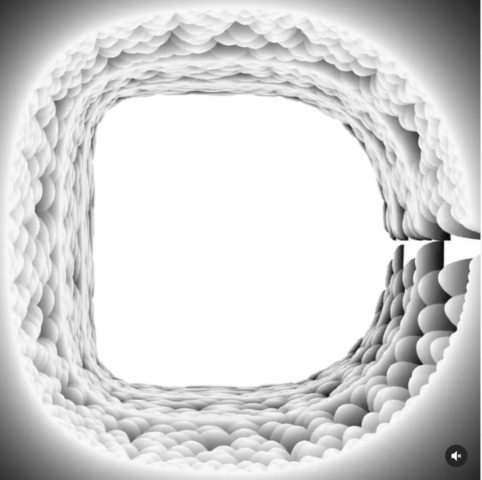
“Circle to Square” by Zach Lieberman.
I was scrolling through his profile, admiring the works but not necessarily feeling drawn to any, before I saw this; it draws parallels in my mind to “The Rose” by Jay DeFeo, which similarly was a merger of geometric patterns surrounding a central space. “The Rose” is one of my favorite paintings ever made because of its sculptural qualities.
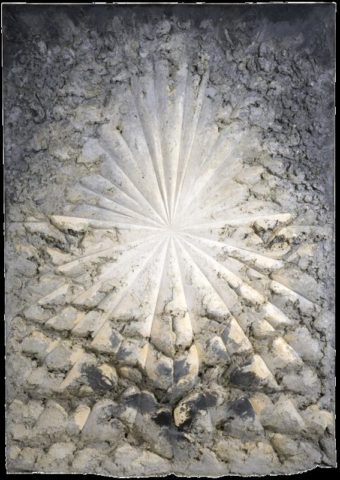
“The Rose” by Jay DeFeo